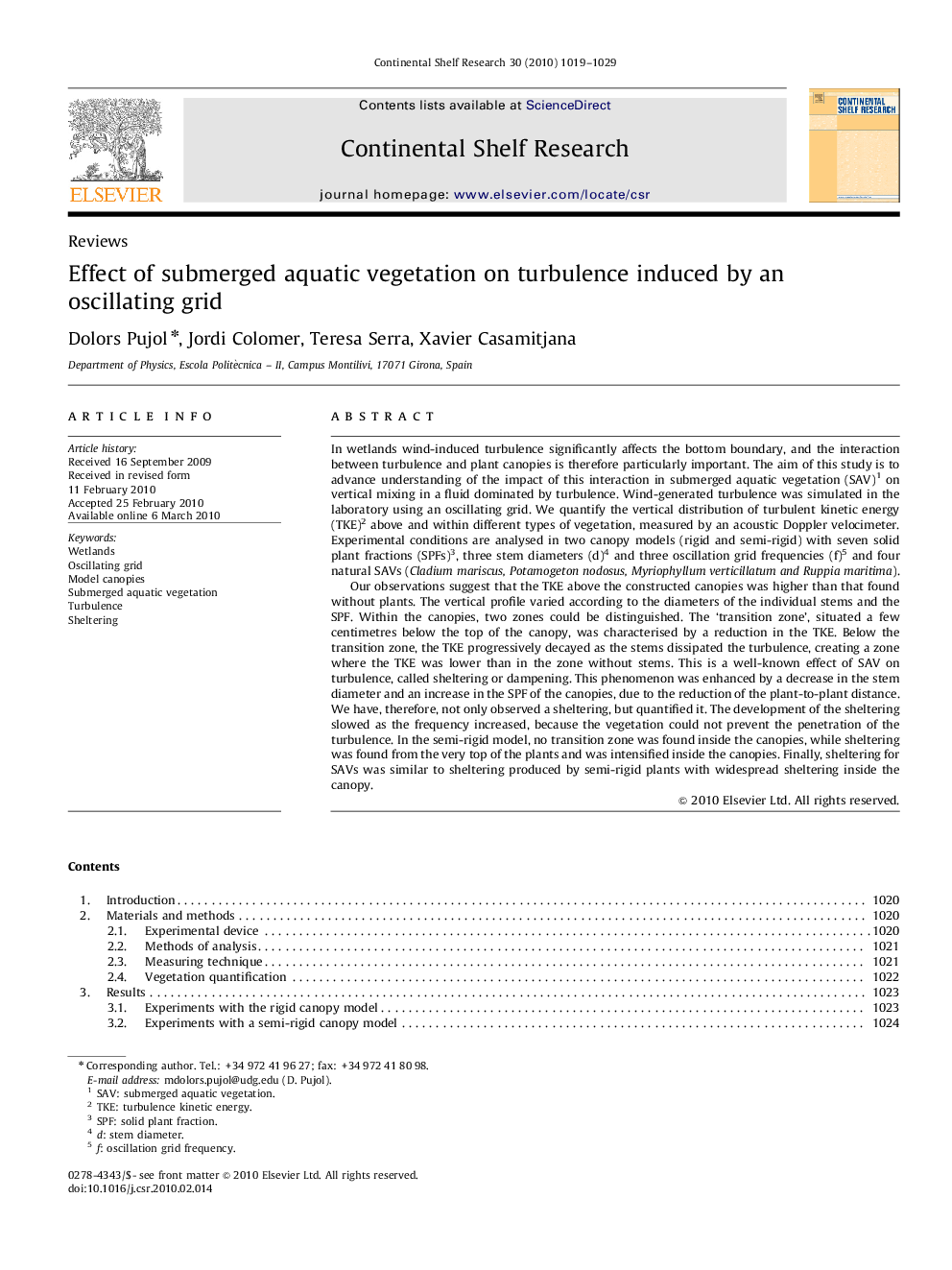| Article ID | Journal | Published Year | Pages | File Type |
|---|---|---|---|---|
| 4532889 | Continental Shelf Research | 2010 | 11 Pages |
In wetlands wind-induced turbulence significantly affects the bottom boundary, and the interaction between turbulence and plant canopies is therefore particularly important. The aim of this study is to advance understanding of the impact of this interaction in submerged aquatic vegetation (SAV)1 on vertical mixing in a fluid dominated by turbulence. Wind-generated turbulence was simulated in the laboratory using an oscillating grid. We quantify the vertical distribution of turbulent kinetic energy (TKE)2 above and within different types of vegetation, measured by an acoustic Doppler velocimeter. Experimental conditions are analysed in two canopy models (rigid and semi-rigid) with seven solid plant fractions (SPFs)3, three stem diameters (d)4 and three oscillation grid frequencies (f)5 and four natural SAVs (Cladium mariscus, Potamogeton nodosus, Myriophyllum verticillatum and Ruppia maritima).Our observations suggest that the TKE above the constructed canopies was higher than that found without plants. The vertical profile varied according to the diameters of the individual stems and the SPF. Within the canopies, two zones could be distinguished. The ‘transition zone’, situated a few centimetres below the top of the canopy, was characterised by a reduction in the TKE. Below the transition zone, the TKE progressively decayed as the stems dissipated the turbulence, creating a zone where the TKE was lower than in the zone without stems. This is a well-known effect of SAV on turbulence, called sheltering or dampening. This phenomenon was enhanced by a decrease in the stem diameter and an increase in the SPF of the canopies, due to the reduction of the plant-to-plant distance. We have, therefore, not only observed a sheltering, but quantified it. The development of the sheltering slowed as the frequency increased, because the vegetation could not prevent the penetration of the turbulence. In the semi-rigid model, no transition zone was found inside the canopies, while sheltering was found from the very top of the plants and was intensified inside the canopies. Finally, sheltering for SAVs was similar to sheltering produced by semi-rigid plants with widespread sheltering inside the canopy.
